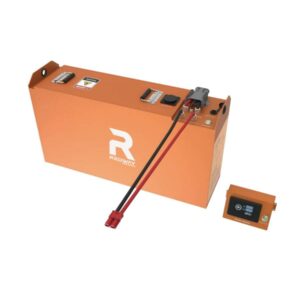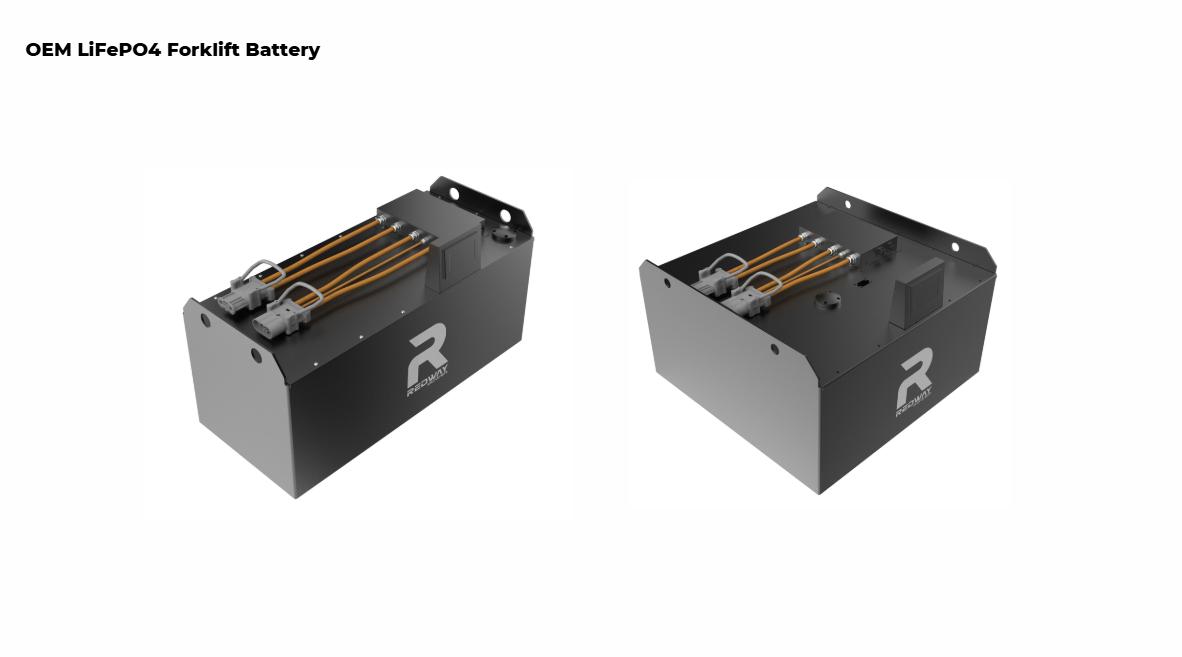What Are Canada’s Hazmat Rules for Shipping Forklift Batteries?
Canada’s hazmat rules for shipping forklift batteries, governed by Transport Canada and TDG Regulations, require strict compliance with classification, packaging, labeling, and documentation. Forklift batteries—lead-acid or lithium-ion—are classified as Class 8 or 9 dangerous goods. Proper UN-certified packaging, hazard labels, shipping documents, and trained personnel are mandatory to avoid penalties or shipment rejection.
How Are Forklift Batteries Classified Under Canadian Hazmat Regulations?
Forklift batteries are classified as dangerous goods under Transport Canada’s TDG Regulations. Lead-acid batteries (wet or sealed) fall under Class 8 (Corrosive), while lithium-ion batteries are Class 9 (Miscellaneous). Proper classification dictates packaging, labeling, and documentation requirements. Incorrect classification risks non-compliance fines up to $50,000 per violation under the Transportation of Dangerous Goods Act.

Understanding the distinction between battery types is critical. Lead-acid batteries contain sulfuric acid, which requires corrosion-resistant packaging and spill containment measures. Lithium-ion batteries, however, pose thermal runaway risks, necessitating specialized packaging to prevent short circuits. A 2023 Transport Canada report highlighted that 22% of misclassification incidents involved shippers incorrectly labeling lithium-ion batteries as non-hazardous. To avoid errors, consult Safety Data Sheets (SDS) and use the TDG Regulations classification flowchart. Companies should also invest in automated classification tools that cross-reference UN numbers (e.g., UN3480 for lithium-ion) with regulatory updates.
| Battery Type | Class | UN Number | Key Requirements |
|---|---|---|---|
| Lead-Acid (Wet) | 8 | UN2794 | Acid-resistant liner, absorbent material |
| Lithium-Ion | 9 | UN3480 | Non-conductive separators, state-of-charge ≤30% for air transport |
What Packaging Standards Apply to Forklift Batteries in Canada?
Forklift batteries must use UN-certified packaging tested to withstand leaks, short circuits, and damage. Lead-acid batteries require acid-resistant containers with absorbent material, while lithium-ion batteries need non-conductive, crush-resistant packaging. Overpack containers must display “Overpack” labels. Non-compliant packaging may lead to shipment seizures or penalties under TDG Regulations Section 4.10.
Which Labels and Marks Are Required for Forklift Battery Shipments?
Labels must include Class 8 or 9 hazard diamonds, UN numbers (e.g., UN2794 for lead-acid), proper shipping names, and battery orientation arrows. Lithium-ion shipments require lithium battery marks (ISO 3864) and “Miscellaneous” labels. All labels must be durable, visible, and placed adjacent to shipping names on contrasting backgrounds per TDG Regulations Part 4.
What Documentation Is Needed for Transporting Forklift Batteries?
Shipping documents must include consignor/consignee details, UN number, proper shipping name, Class, packing group, and emergency contact. Lithium-ion shipments exceeding 500 kg require a 24/7 emergency response plan. Digital records are acceptable if readily accessible. Missing/inaccurate documentation violates TDG Regulations Section 3.5, incurring fines up to $10,000.
Why Is Employee Training Critical for Hazmat Battery Shipping?
TDG Regulations mandate hazmat training every three years for handlers, shippers, and drivers. Training covers classification, emergency response, and documentation. Untrained personnel risk $5,000–$50,000 fines per incident. A 2023 Transport Canada audit found 62% of violations stemmed from inadequate training, highlighting its importance in compliance.
How Do Environmental Regulations Impact Battery Shipping in Canada?
Under the Canadian Environmental Protection Act, used forklift batteries require recycling via approved facilities like Call2Recycle. Spills must be reported to provincial authorities within 24 hours. Non-recycled batteries incur $200–$1M fines. Lithium-ion shipments must also comply with federal Products Containing Mercury Regulations to prevent toxic leakage.
What Are Common Compliance Challenges in Forklift Battery Shipping?
Top challenges include incorrect UN certification (37% of violations), outdated training (29%), and improper lithium-ion segregation (18%). A 2022 case saw a Quebec distributor fined $28,000 for stacking lithium batteries near flammable materials. Regular audits, updated SDS sheets, and using Transport Canada’s TDG Checklist mitigate risks.
One persistent issue is the misapplication of exemptions. For example, small lithium batteries under 2.7 kg may qualify for Limited Quantity exceptions, but carriers often fail to document these properly. Additionally, 43% of companies struggle with cross-border consistency—while Canada aligns with UN Model Regulations, subtle differences exist in hazard communication standards compared to U.S. PHMSA rules. Implementing a centralized compliance management system reduces errors by 58%, according to a 2024 industry survey. Proactive measures like pre-shipment checklists and third-party audits are essential for avoiding cross-jurisdictional penalties.
Expert Views
“Canada’s hazmat rules for forklift batteries prioritize safety but demand meticulous attention,” says a Redway Battery compliance officer. “We’ve seen a 40% rise in lithium-ion-related violations since 2021. Shippers must invest in UN 38.3 testing for lithium batteries and predictive leak detection systems. Partnering with certified recyclers isn’t just lawful—it’s critical for sustainable operations.”
Conclusion
Navigating Canada’s hazmat rules for forklift batteries requires rigorous adherence to classification, packaging, labeling, and training protocols. With lithium-ion shipments under increased scrutiny, leveraging certified partners and predictive compliance tools ensures safe, legal transport. Staying updated on TDG amendments and environmental mandates remains paramount for avoiding penalties and maintaining operational integrity.
FAQ
- Can I Ship Lithium Forklift Batteries via Air in Canada?
- Air shipping lithium forklift batteries requires IATA DGR compliance, including State of Charge (SoC) ≤30% and CAA-approved packaging. Transport Canada prohibits damaged/recalled lithium batteries on flights. Ground transport is recommended unless air transit is unavoidable.
- Does Transport Canada Allow Reused Packaging for Batteries?
- Reused packaging must be UN-certified, free of corrosion/defects, and relabeled per TDG Section 4.6. Lead-acid battery containers require neutralization certificates if previously holding acid. Lithium-ion packaging can’t be reused if inner liners are compromised.
- Are There Weight Limits for Forklift Battery Shipments?
- Single shipments of lead-acid batteries can’t exceed 1,000 kg gross weight without a Special Permit. Lithium-ion shipments over 333 kg require Dangerous Goods Safety Advisor (DGSA) certification. Provincial limits vary—Alberta caps lithium shipments at 500 kg per vehicle without emergency escorts.

